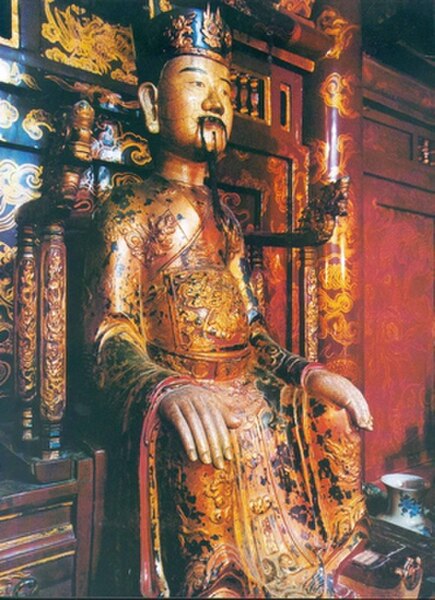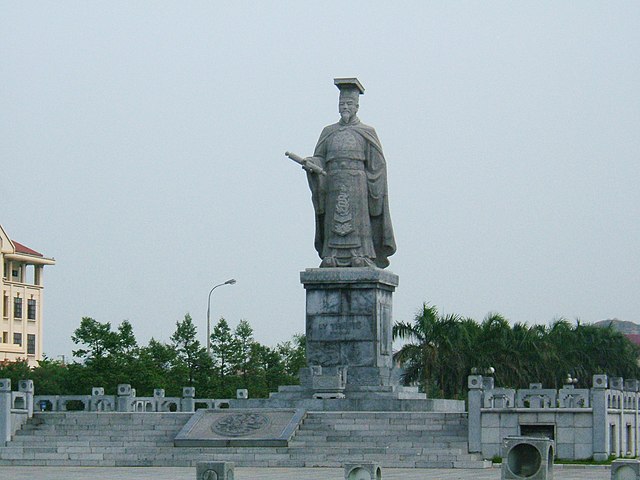Nam tiến is a historiographical concept that describes the historic southward expansion of the territory of Vietnamese dynasties' dominions of Đại Việt from the 11th to the 19th centuries. The concept of Nam tiến has differing interpretations, with some equating it to Viet colonialism of the south and to a series of wars and conflicts between several Vietnamese kingdoms and Champa Kingdoms, which resulted in the annexation and Vietnamization of the former Cham states as well as indigenous territories.
Porcelain painting in Bến Dược Temple describing Vietnamese settlers fighting wild animals, especially tigers
Đại Việt, often known as Annam, was a monarchy in eastern Mainland Southeast Asia from the 10th century AD to the early 19th century, centered around the region of present-day Hanoi, Northern Vietnam. Its early name, Đại Cồ Việt, was established in 968 by Vietnamese ruler Đinh Bộ Lĩnh after he ended the Anarchy of the 12 Warlords, until the beginning of the reign of Lý Thánh Tông, the third emperor of the Lý dynasty. Đại Việt lasted until the reign of Gia Long, the first emperor of the Nguyễn dynasty, when the name was changed to Việt Nam.
Sculpture of Đinh Bộ Lĩnh in Hoa Lư temple (c. 17th cent).
Statue of Ly Cong Uan (974–1028) in Bac Ninh.
The inscription of Dạm Pagoda (built by king Lý Nhân Tông around c. early 12th cent).
Luqīn (Annam/Đại Việt) and Sanf (Champa) are shown in the bottom right of the Tabula Rogeriana, drawn by al-Idrisi for Roger II of Sicily in 1154.





